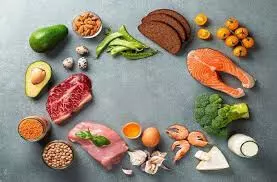3 useful foods are useless for diabetic patients
Life Style: Due to changes in lifestyle and eating more junk food, the body is continuously attacked by diseases. The incidence of diabetes has also almost doubled in men and women in India. He says that once infected, this disease lasts for life. At the same time, carelessness regarding this disease can cause many problems. Proper nutrition is necessary to avoid the problems caused by this. Recently, Ayurveda expert Dr. Deeksha Bhavsar has named three such food items which, despite being beneficial, can prove to be harmful for diabetic patients.
According to Ayurveda, the taste of curd is spicy. Difficult to digest and liquefy. Increases Kapha dosha in the body. When mucus increases, weight increases and metabolism is disrupted. In such a situation, you may feel lazy. When Kapha dosha increases, nutrient deficiencies may occur, and cholesterol and triglyceride levels may also increase. In such a situation, it is better for people with diabetes to avoid cheese. Sometimes you can also drink buttermilk instead of cheese.
People suffering from diabetes should avoid sugar, but do you know that consuming jaggery in equal or more quantity than sugar can increase your sugar level? Experts say that jaggery is 100 percent healthier than sugar as it is naturally produced without chemicals and is rich in nutrients. Therefore, it is possible to eat jaggery, but in limited quantity. Because eating too much can be harmful.
People suffering from diabetes may suffer from high blood pressure. This increases the risk of heart disease, stroke and kidney disease. Experts say that limiting salt intake or switching to rock salt, pink Himalayan salt, can help you prevent or control high blood pressure, heart disease and other problems related to diabetes.
Experts say that these foods are harmful for diabetics, but this does not mean that they should not be eaten. Sometimes you can eat these things in limited quantities. The expert also clarified that he has not made the list of these products himself, but these particular things have been described in Ayurvedic classics.


Comments are closed.